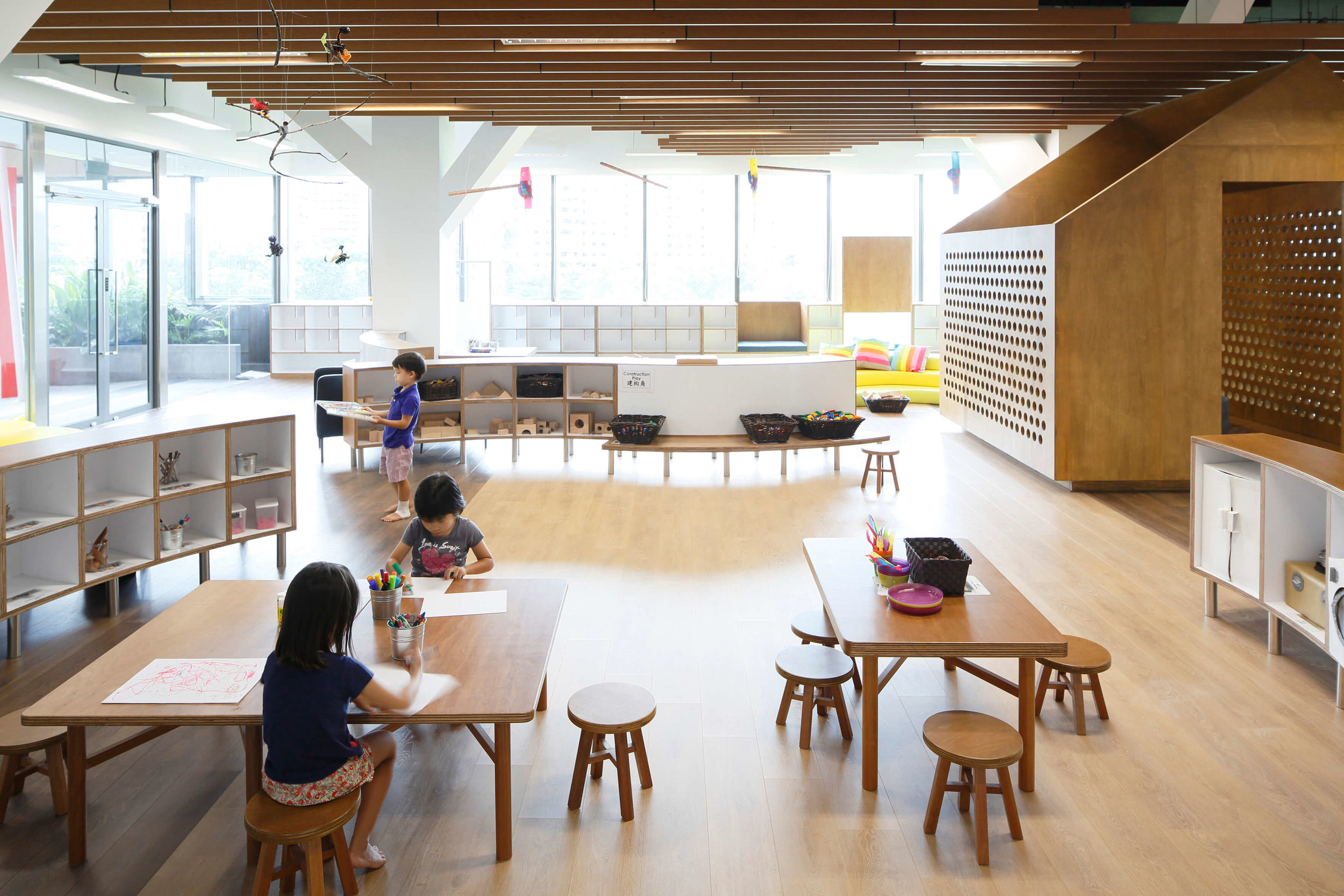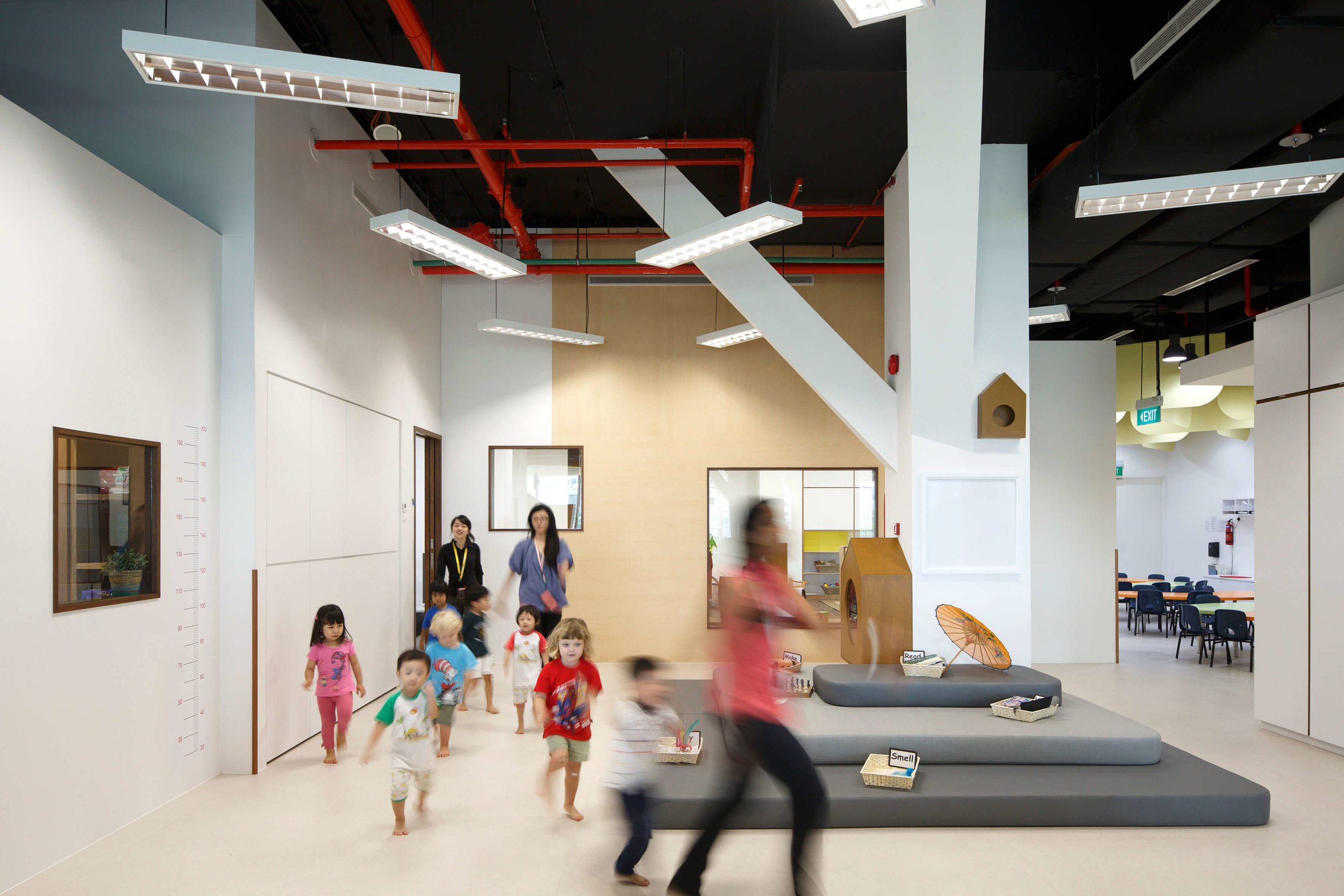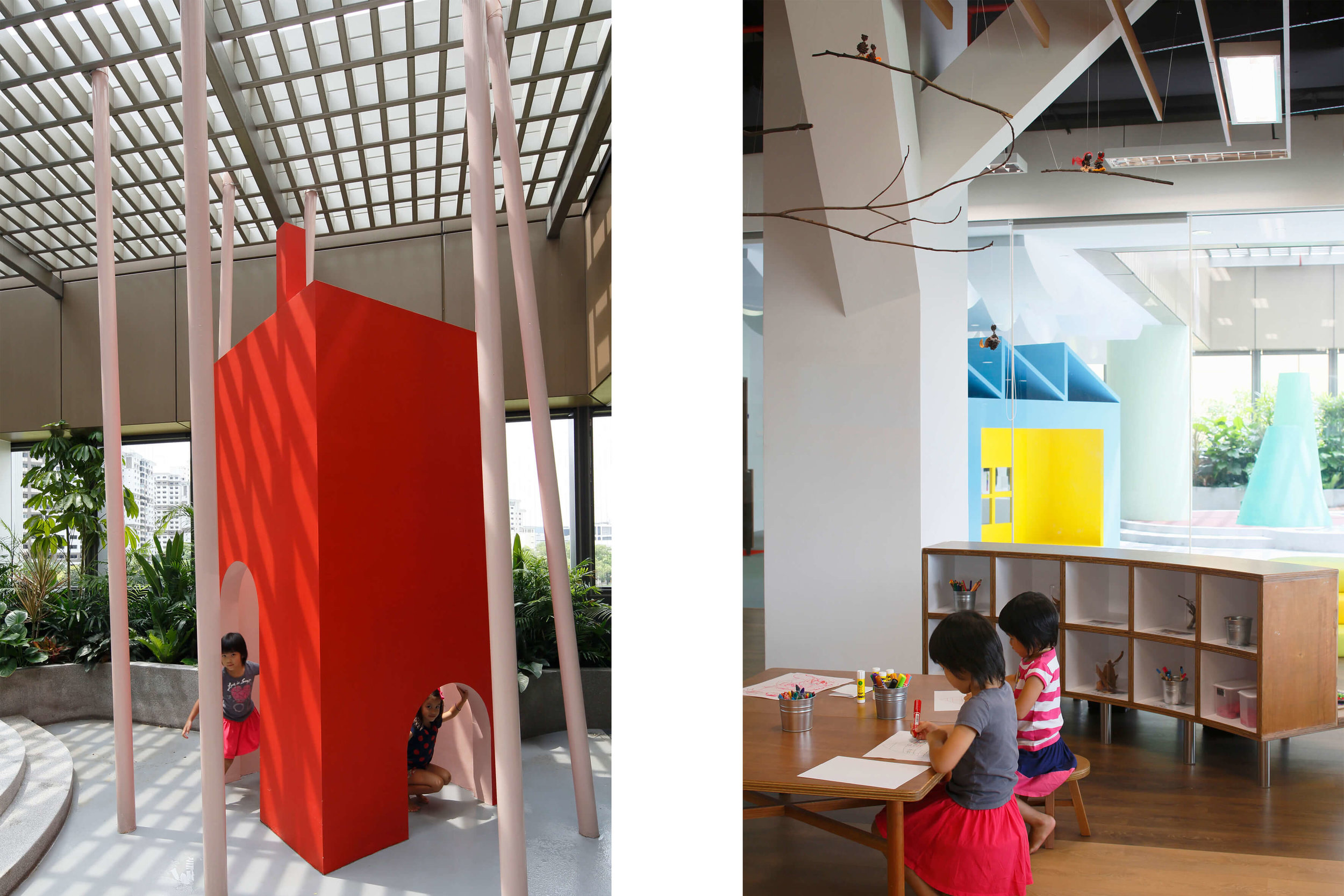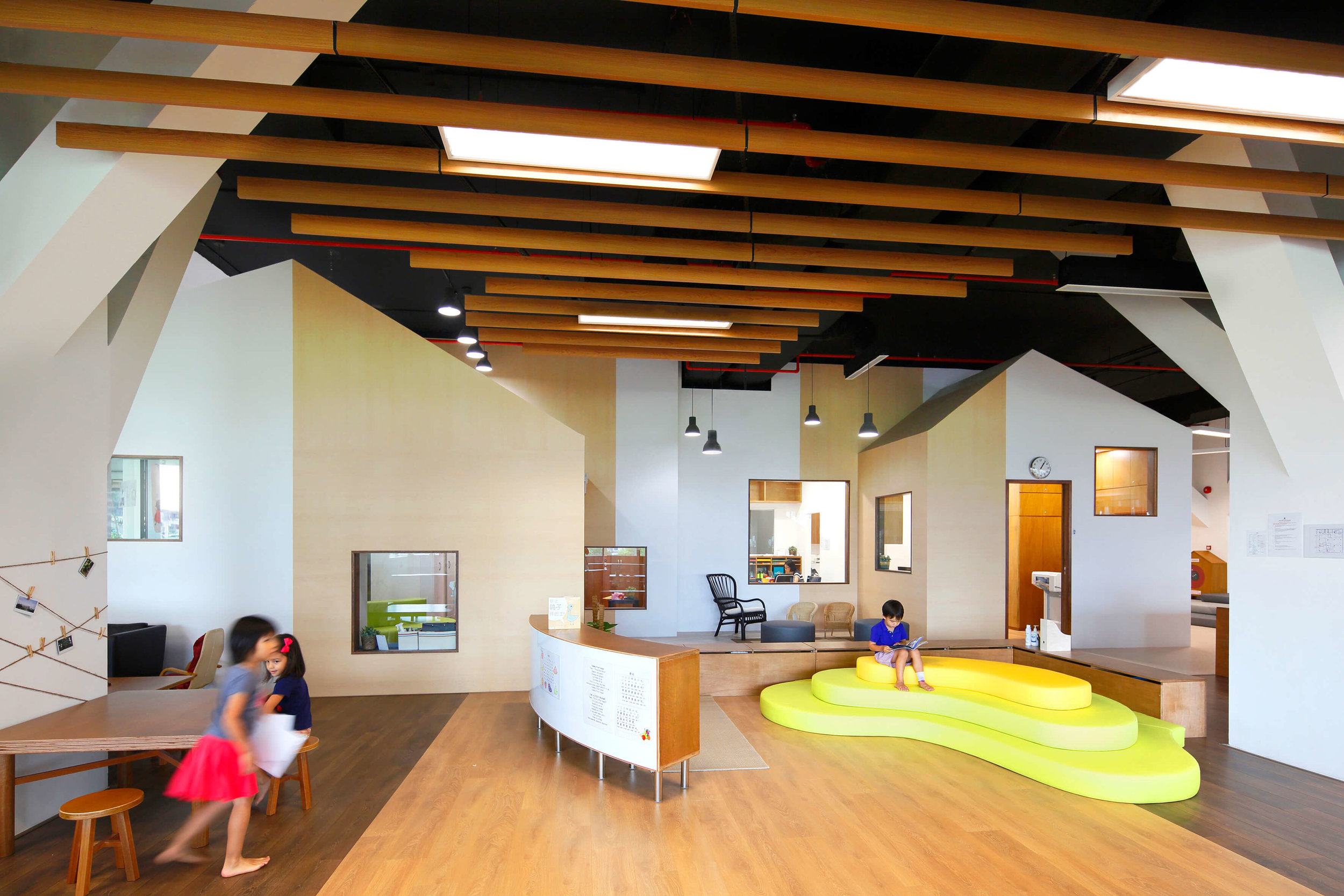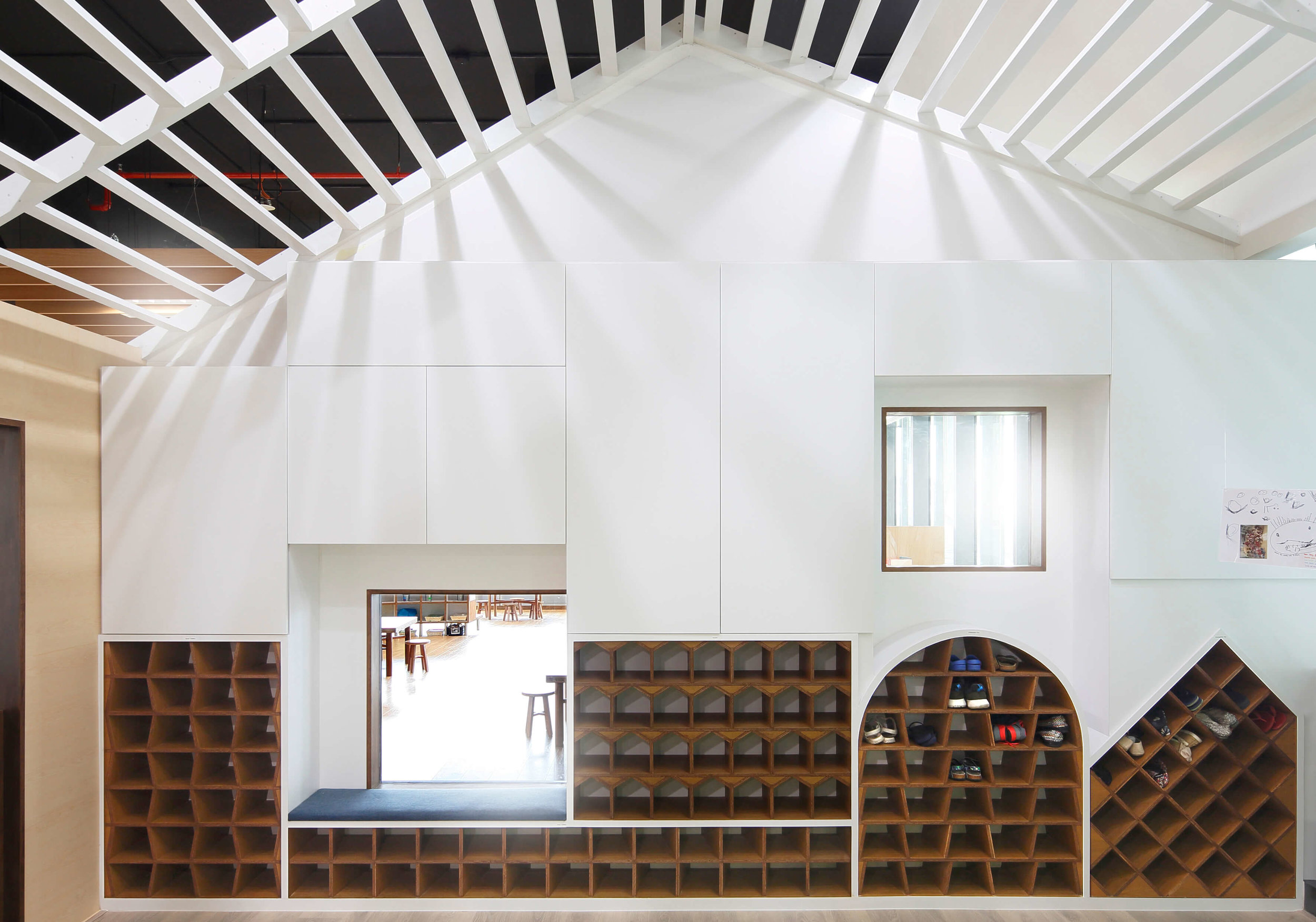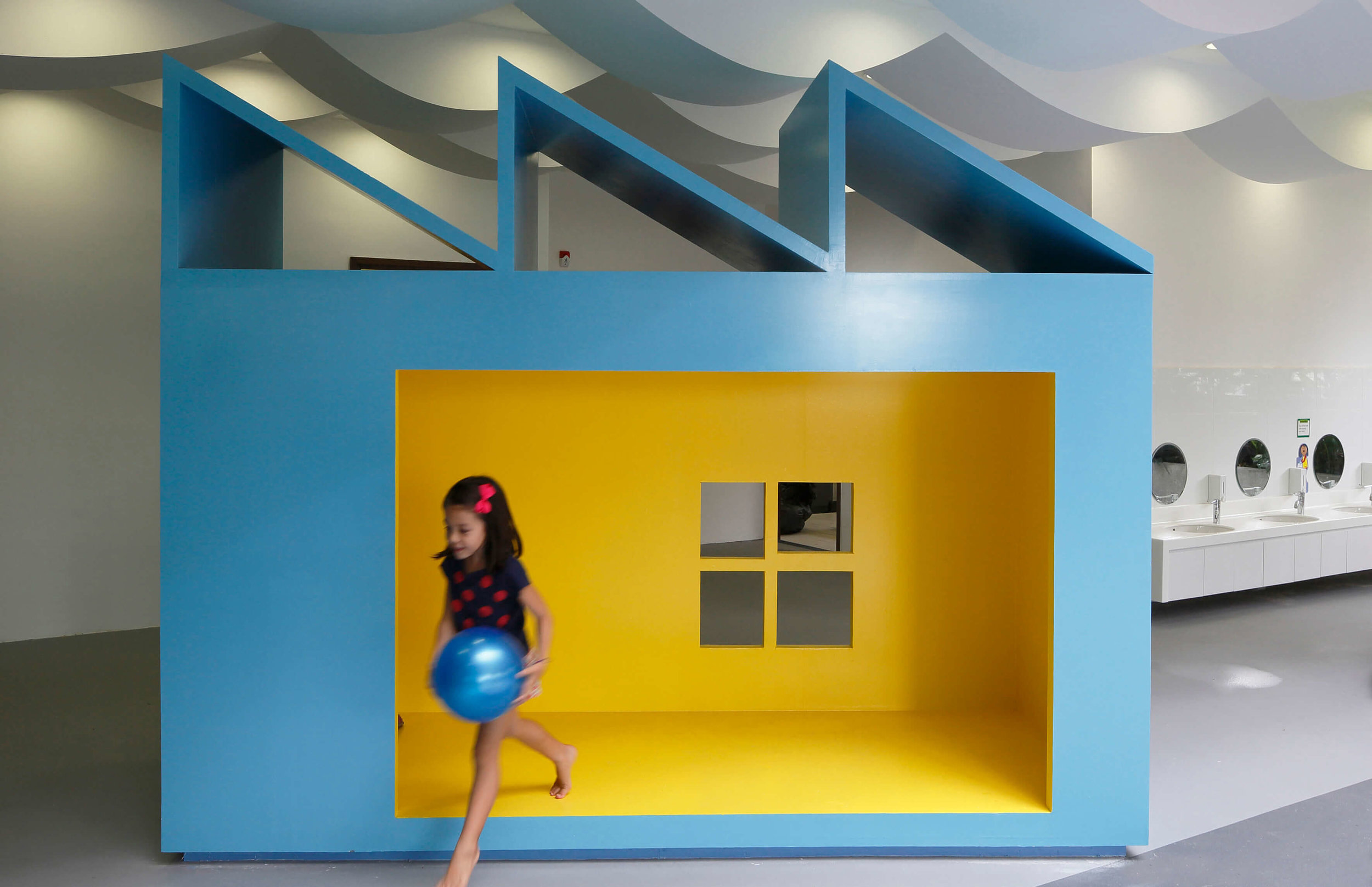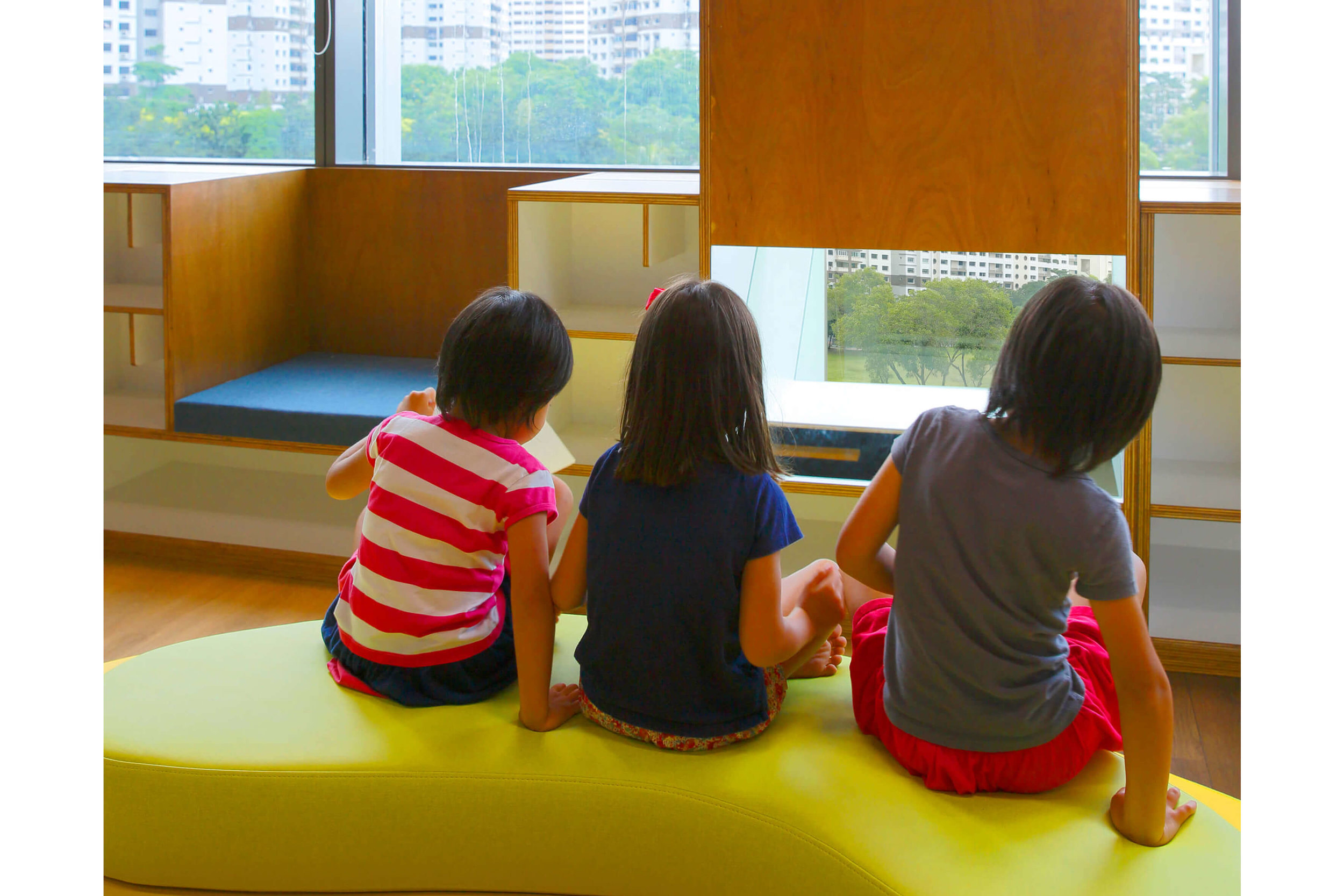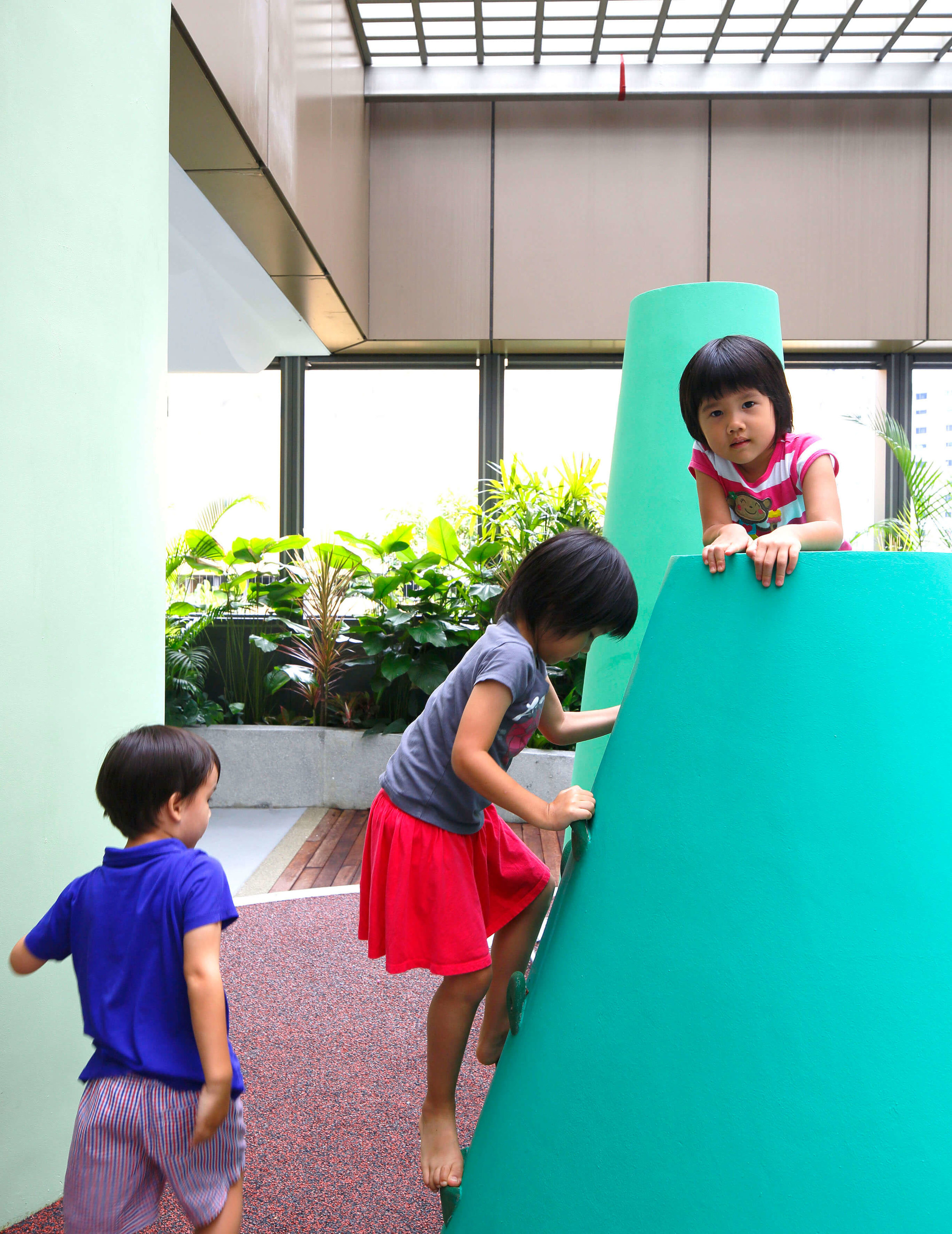Singapore's first design-led preschool.
project
Caterpillar's Cove Preschool
client
NTUC First Campus
Team (Lekker design)
Ong Ker-Shing, Joshua Comaroff, Chen Shunann, Huixian Yee
The Caterpillar’s Cove @Jurong East was intended as the first of a new generation of preschools in Singapore. It arises from the belief that design can do much more to serve young children—that our youngest have a right to environments that will arouse their imagination and creativity. It was funded by the Lien Foundation in the belief that Singapore may become a centre of excellence in early childhood education, giving rise to spaces that will equal the quality of our teachers and curricula. This was the belief of our clients, NTUC First Campus, and the school’s director, Ms. Geraldine Teo-Zuzarte.
As with many Singaporean pre-schools, however, Cove 2 was sited within a somewhat generic office space, lacking many of the elements one would expect in a vibrant or attractive educational setting. To create a sense of place, the designers at Lekker Architects returned to the classic image of the schoolhouse—actually re-constructing one within the neutral column-field of the office unit. Teachers’ offices and infant care rooms were imagined as the interior of this little building-within-a-building, set in a loose arrangement of windows and gables. The space around the “house” becomes something like a schoolyard: four open-planned learning zones set under columns re-cast to resemble trees. Overhead, a drifting curvilinear trellis conceals services and evokes a sheltering bank of cloud.
Within this “schoolyard” there are a number of innovations. All furniture was custom designed, to support the teaching philosophy of Cove 2 and to promote the ergonomic needs of the students. Tables and benches were manufactured at incremental sizes, so that students of different ages and stages could use them comfortably. In addition to conventional classroom furniture, seating was re-imagined as a collection of soft topographical forms, rather than conventional chairs—allowing students to occupy them in a broad range of ways. Because the windows of the original office unit are positioned above a child’s eye-level, a periscope was developed that allows the students to look out. An observation booth (for trainee teachers) is designed as a timber garden shed, and can be used by children who desire a quiet moment or an intimate space to retreat.
The design program of Cove 2 continues to the outside, as the unit extends to a small covered exterior space. This area was not well suited for a conventional playground, and was re-considered as a series of micro-environments for imaginative play. The team created a set of follies, suggesting storybook themes in a highly abstract design language of form and colour. There is a tiny house, which alternately resembles a factory, a theatre, and a crocodile. There is a winding river of sand, and a shelter in the woods. There is also a range of conical “hills”—a hybrid of Aldo Rossi and “Yellow Submarine”—that can be climbed. Topographical seats and stairs extend the formal theme of the interior to the outside. Additionally, a lush perimeter garden of native plant species forms a jungle-y backdrop for play.
All images by Darren Soh/ Fullframephotos

